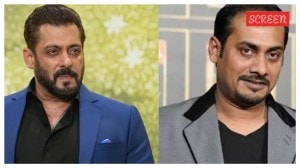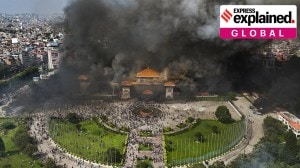What makes Nandalal Bose’s 1938 Haripura posters essential viewing
Making art accessible to children, one artist and one artwork at a time
 At the Haripura session, the panels were meant to decorate the gates and the pandal pavilion, intended to portray village scenes familiar to ordinary people, using local material. Bose stayed in Haripura for months to observe the local population and customs, creating several preparatory sketches. (Photo: Instagram/@umatnair)
At the Haripura session, the panels were meant to decorate the gates and the pandal pavilion, intended to portray village scenes familiar to ordinary people, using local material. Bose stayed in Haripura for months to observe the local population and customs, creating several preparatory sketches. (Photo: Instagram/@umatnair) Artwork: Haripura posters, 1938
Artist: Nandalal Bose
Where can it be viewed: In the collection of National Gallery of Modern Art
The first principal of Santiniketan’s fine-arts college, Kala Bhavana, Nandalal Bose was a pioneer of modern Indian art who trained generations of artists. Greatly admired by his seniors, he guided his students to take inspiration from nature and art traditions like him. Mentored by Abanindranath Tagore, Bose’s influences ranged from Japanese Nihonga traditions to Mughal and Rajasthani miniatures, palm-leaf manuscripts and the murals at Ajanta caves.
This set of works, known as “Haripura Panels”, were painted by the artist at the behest of Mahatma Gandhi in 1938 for the pandal for the Congress session at Haripura, Gujarat. By this time, the polymath had already created his iconic portrait of Gandhi during the 1930 Dandi March, and had decorated the Congress pavilion at Lucknow in 1936.
View this post on Instagram
At the Haripura session, the panels were meant to decorate the gates and the pandal pavilion, intended to portray village scenes familiar to ordinary people, using local material. Bose stayed in Haripura for months to observe the local population and customs, creating several preparatory sketches. The panels in vibrant earthy colour palette and with energetic lines offer a window into everyday lives, from a potter to a hunter to a bull wrangler. If there are women engaged in household activities such as cooking, pounding rice, feeding an infant, there is also the depiction of a dhobi with his donkey and washed clothes. Painted with natural pigments on handmade paper, the posters were exhibited at the India Pavilion at the Venice Biennale in 2019, and are also currently on display at the National Gallery of Modern Art in Delhi.
For all the latest Parenting News, download Indian Express App.
Photos





- 01
- 02
- 03
- 04
- 05

























